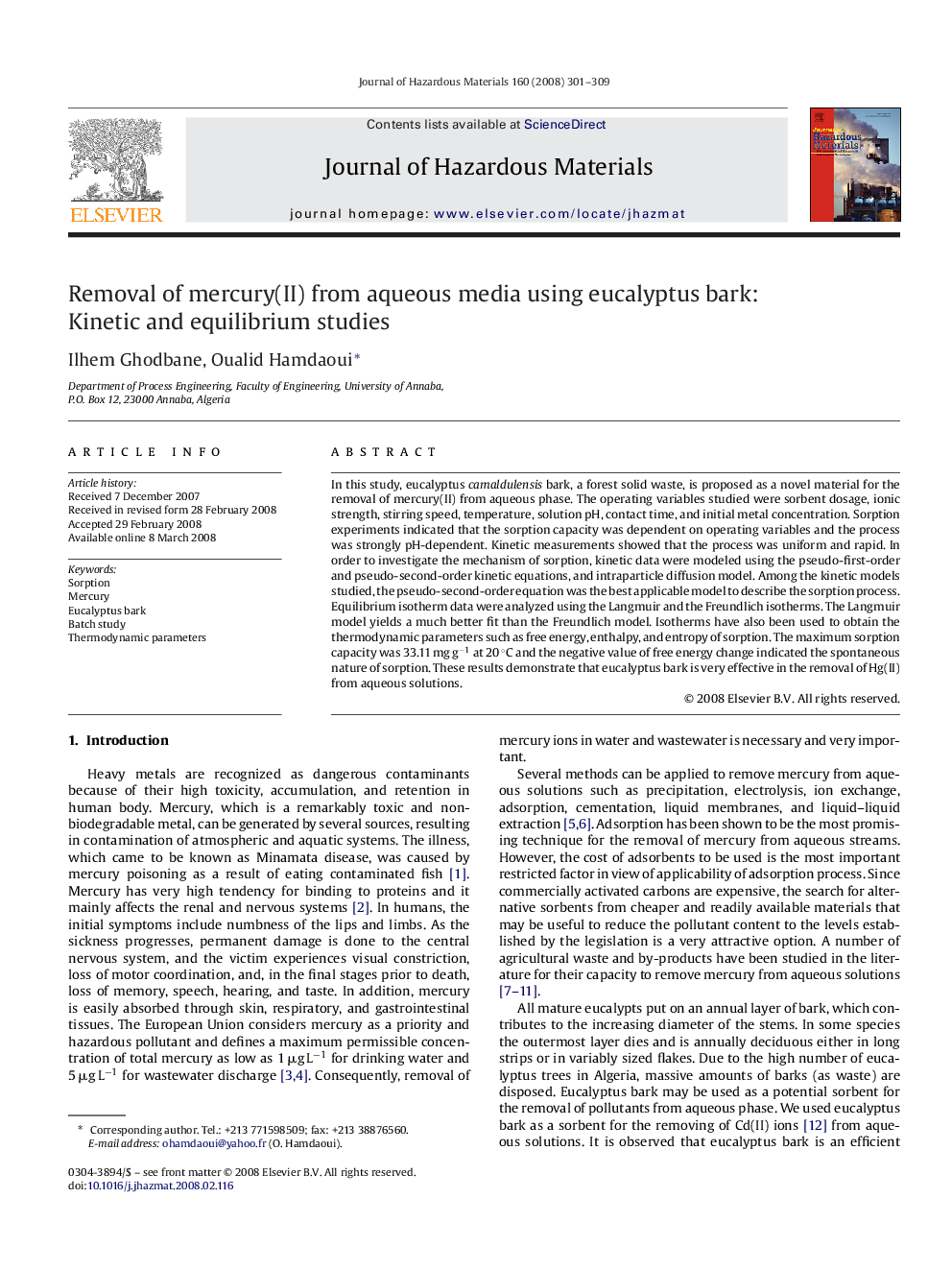| Article ID | Journal | Published Year | Pages | File Type |
|---|---|---|---|---|
| 582717 | Journal of Hazardous Materials | 2008 | 9 Pages |
Abstract
In this study, eucalyptus camaldulensis bark, a forest solid waste, is proposed as a novel material for the removal of mercury(II) from aqueous phase. The operating variables studied were sorbent dosage, ionic strength, stirring speed, temperature, solution pH, contact time, and initial metal concentration. Sorption experiments indicated that the sorption capacity was dependent on operating variables and the process was strongly pH-dependent. Kinetic measurements showed that the process was uniform and rapid. In order to investigate the mechanism of sorption, kinetic data were modeled using the pseudo-first-order and pseudo-second-order kinetic equations, and intraparticle diffusion model. Among the kinetic models studied, the pseudo-second-order equation was the best applicable model to describe the sorption process. Equilibrium isotherm data were analyzed using the Langmuir and the Freundlich isotherms. The Langmuir model yields a much better fit than the Freundlich model. Isotherms have also been used to obtain the thermodynamic parameters such as free energy, enthalpy, and entropy of sorption. The maximum sorption capacity was 33.11 mg gâ1 at 20 °C and the negative value of free energy change indicated the spontaneous nature of sorption. These results demonstrate that eucalyptus bark is very effective in the removal of Hg(II) from aqueous solutions.
Related Topics
Physical Sciences and Engineering
Chemical Engineering
Chemical Health and Safety
Authors
Ilhem Ghodbane, Oualid Hamdaoui,
